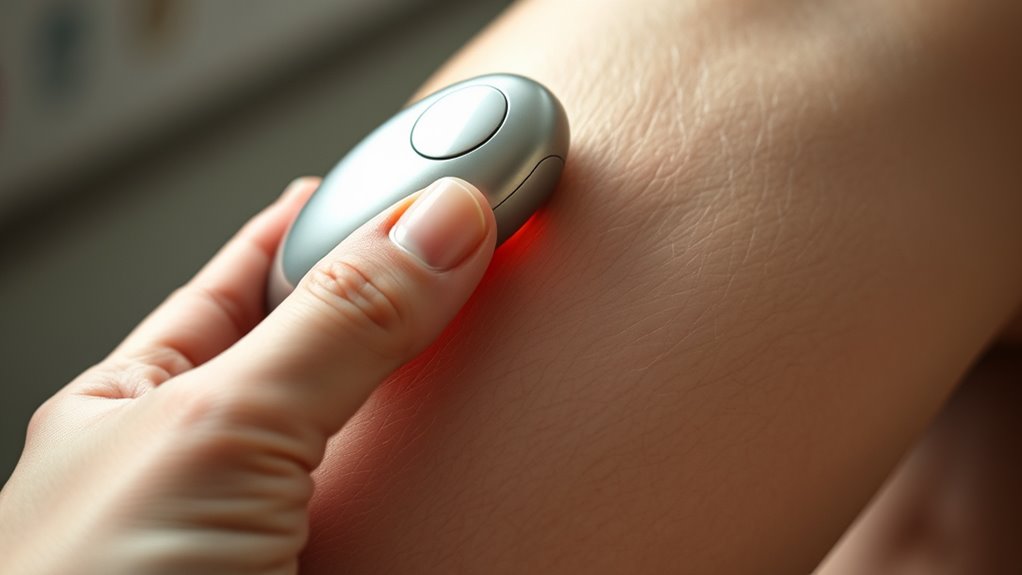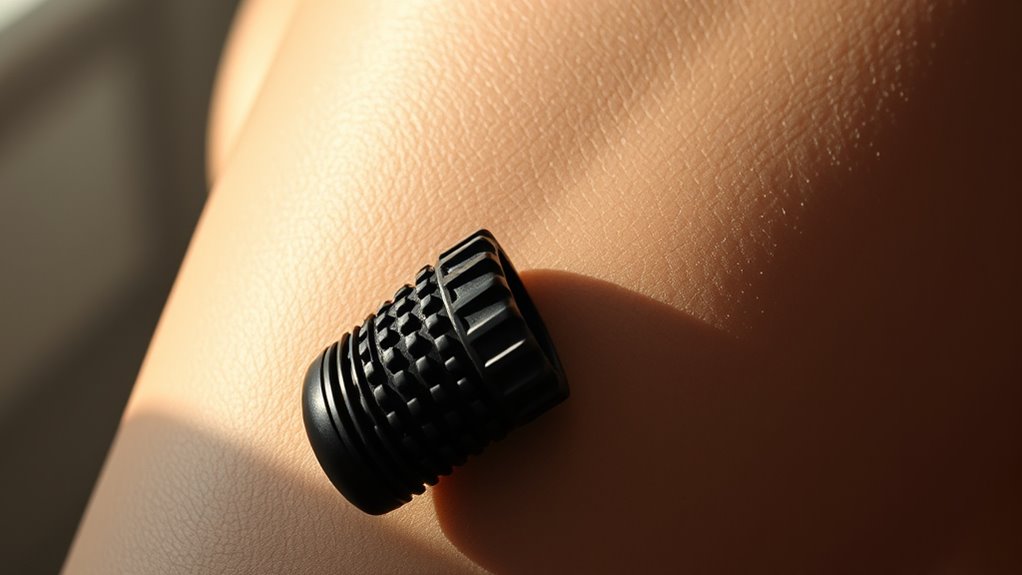Fascia is the connective tissue surrounding your muscles, bones, and nerves, supporting your movement and stability. When fascia becomes tight or restricted, it limits your range of motion and causes discomfort. Percussive therapy works by targeting these dense areas, helping to loosen and relax the fascia to restore flexibility. This reduces stiffness, improves muscle glide, and lowers injury risk. Keep exploring to learn more about how you can maintain healthy fascia for better movement.
Key Takeaways
- Percussive therapy targets fascia to loosen dense or sticky areas, restoring flexibility and reducing restrictions.
- It promotes better muscle glide, helping tissues move smoothly and preventing stiffness or discomfort.
- The therapy decreases soft tissue restrictions, lowering injury risk and supporting overall mobility.
- Regular use helps keep fascia supple, enhancing blood flow and speeding up recovery after activity.
- By releasing tight fascia, percussive therapy improves body mechanics and supports sustained athletic performance.

Fascia is a connective tissue that surrounds and supports muscles, bones, nerves, and blood vessels throughout your body. This web-like structure plays an essential role in maintaining your overall mobility and stability. When fascia is healthy and flexible, it allows your muscles to move freely, promoting better muscle flexibility. That flexibility is vital not just for everyday movement but also for athletic performance. When fascia becomes tight, restricted, or knotty, it can limit your range of motion, making movements stiff and uncomfortable. This is where percussive therapy can make a significant difference. By targeting fascia directly, it helps loosen up these dense or sticky areas, restoring better muscle flexibility and reducing the risk of injuries. When your fascia is in prime condition, your muscles can glide smoothly, decreasing the chances of strains, pulls, or tears that often happen when tissues stick together or become overly tense.
Injury prevention is closely tied to the health of your fascia. If your fascia is tight or less pliable, you’re more prone to developing soft tissue injuries because your muscles and joints don’t move as freely as they should. Regular use of percussive therapy can help keep fascia loose and supple, which means your muscles won’t have to work harder to perform daily activities or intense workouts. When fascia remains flexible, your body absorbs shocks better, and your joints stay mobile, reducing the likelihood of overuse injuries or strains. Plus, by improving blood flow to the tissues, percussive therapy supports faster recovery and decreases soreness after exercise. This proactive approach keeps your soft tissues resilient, so even after intense activity, your muscles and fascia bounce back quicker, maintaining your overall injury resistance.
Understanding how fascia influences your body’s mechanics allows you to see the importance of maintaining its health. When you incorporate percussive therapy into your routine, you’re not just addressing pain or stiffness—you’re actively enhancing your muscular health, boosting flexibility, and fortifying your body against future injuries. The benefits extend beyond just feeling good; they contribute to sustained performance and longevity. By keeping your fascia in check, you’re supporting your muscles to stay more flexible, which in turn helps you move more efficiently and safely. Proper road sign awareness and understanding can be crucial for safe navigation—similarly, understanding fascia health is essential for maintaining optimal physical function. Whether you’re an athlete or someone who simply wants to stay active and injury-free, prioritizing fascia health through targeted therapy can make a substantial difference in your overall well-being.
Frequently Asked Questions
Can Fascia Issues Cause Chronic Pain?
Fascia issues can definitely cause chronic pain. When fascia loses mobility, it can lead to muscle restrictions and persistent discomfort. You might notice tightness, stiffness, and ongoing pain that doesn’t improve with rest. By addressing fascia mobility through techniques like percussive therapy, you can help reduce chronic discomfort. Restoring fascia health allows your muscles to move freely, easing pain and improving your overall function.
How Long Should I Use Percussive Therapy on One Area?
You might wonder how long to use percussive therapy on one area. While there’s no one-size-fits-all answer, generally, 1-2 minutes per spot is effective. This allows you to promote muscle relaxation and improve tissue flexibility without overdoing it. Listen to your body—if you feel discomfort, reduce the duration. Consistent use helps loosen fascia, easing pain and enhancing movement, but always follow manufacturer guidelines.
Are There Any Risks or Contraindications?
You should be aware of potential risks or contraindications when using percussive therapy. If you have skin sensitivity or bleeding risks, avoid applying excessive pressure or prolonged sessions. People with certain medical conditions, like blood clotting disorders or skin infections, should consult a healthcare professional before use. Always listen to your body, and if you experience pain or discomfort, stop immediately to prevent injury.
How Does Fascia Affect Athletic Performance?
Imagine fascia as the hidden highway facilitating your body’s traffic flow. When fascia is healthy, your muscle elasticity improves, making your movements smoother and more efficient. This enhanced movement efficiency boosts athletic performance because your body can respond quickly and with less effort. By keeping fascia in top shape, you liberate your full potential, reducing injury risk and maximizing strength, agility, and endurance during every activity.
Is Percussive Therapy Suitable for All Age Groups?
You might wonder if percussive therapy suits all age groups. Generally, it’s safe, but age considerations matter. Younger individuals can typically use it more frequently, while older adults may need gentler sessions and longer recovery times. Always listen to your body, start with shorter therapy frequency, and consult a healthcare professional if you have health concerns. Adjusting intensity guarantees safe, effective benefits across all ages.
Conclusion
Now that you understand fascia and how percussive therapy targets it, imagine what revealing this hidden world could mean for your recovery and performance. Could releasing tight fascia be the key to overcoming persistent pain or reaching your next fitness milestone? The possibilities are intriguing, and the journey has just begun. Stay curious—your body’s secrets might hold more answers than you ever expected, waiting quietly beneath the surface just like fascia itself.








